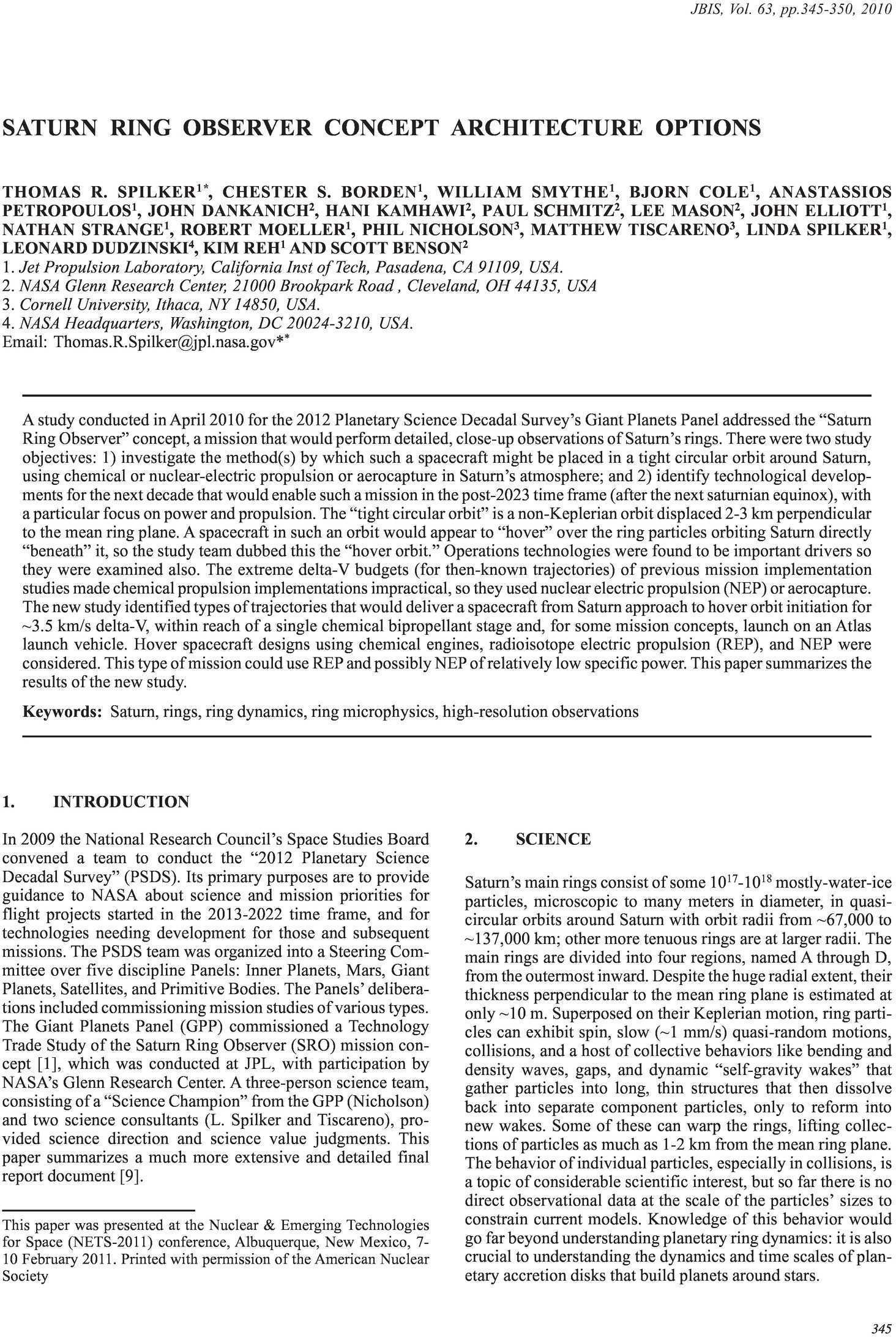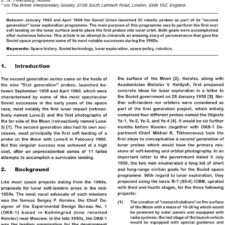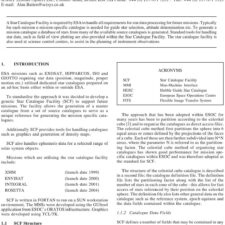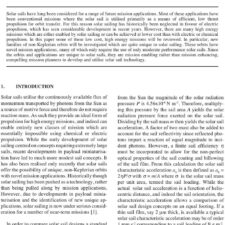Saturn Ring Observer Concept Architecture Options
£5.00
T. R. Spilker et al. (2010), JBIS, 63, pp.345-350
Refcode: 2010.63.345
Keywords: Saturn, rings, ring dynamics, ring microphysics, high-resolution observations
Abstract:
A study conducted in April 2010 for the 2012 Planetary Science Decadal Survey’s Giant Planets Panel addressed the “Saturn Ring Observer” concept, a mission that would perform detailed, close-up observations of Saturn’s rings. There were two study objectives: 1) investigate the method(s) by which such a spacecraft might be placed in a tight circular orbit around Saturn,
using chemical or nuclear-electric propulsion or aerocapture in Saturn’s atmosphere; and 2) identify technological developments for the next decade that would enable such a mission in the post-2023 time frame (after the next saturnian equinox), with a particular focus on power and propulsion. The “tight circular orbit” is a non-Keplerian orbit displaced 2-3 km perpendicular to the mean ring plane. A spacecraft in such an orbit would appear to “hover” over the ring particles orbiting Saturn directly “beneath” it, so the study team dubbed this the “hover orbit.” Operations technologies were found to be important drivers so
they were examined also. The extreme delta-V budgets (for then-known trajectories) of previous mission implementation studies made chemical propulsion implementations impractical, so they used nuclear electric propulsion (NEP) or aerocapture. The new study identified types of trajectories that would deliver a spacecraft from Saturn approach to hover orbit initiation for ~3.5 km/s delta-V, within reach of a single chemical bipropellant stage and, for some mission concepts, launch on an Atlas launch vehicle. Hover spacecraft designs using chemical engines, radioisotope electric propulsion (REP), and NEP were considered. This type of mission could use REP and possibly NEP of relatively low specific power. This paper summarizes the results of the new study.





